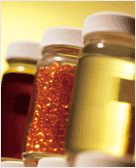 Phenolic resins are used in many applications. A broad classification system, used at the October, 2006 GPRA meeting in Shanghai, listed the following broad application areas:
Phenolic resins are used in many applications. A broad classification system, used at the October, 2006 GPRA meeting in Shanghai, listed the following broad application areas:
- Mineral Wool
- Wood Products
- Paper for Wood Application
- Phenolic Foam
- Friction
- Rubber
- Felt Bonding
- Foundry
- Refractory
- Fibre Reinforced Phenolic
- Electrical Products
- Coatings
- Adhesives
- Abrasives/Grinding Wheels
- Moulding Compounds
- Carbonless Copy Paper
- Ink
